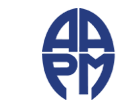| Question 1: According to analysis of the RTOG 9704 study for pancreatic cancer approximately what percentage of plans exhibited protocol violations: |
| Reference: | Abrams et al. Failure to adhere to protocol specified radiation therapy guidelines was associated with decreased survival in RTOG 9704, Int J Radiat Oncol Biol Phys, 82(2), 809-816, 2012. |
| Choice A: | 1%. |
| Choice B: | 5%. |
| Choice C: | 10%. |
| Choice D: | 50%. |
| Question 2: In the Incident Learning System white paper, how many steps were identified for the external beam radiation therapy process? |
| Reference: | Ford, E.C., et al., (2012). Consensus recommendations for incident learning database structures in radiation oncology. Medical Physics, 39(12): p. 7272-7290. |
| Choice A: | 88. |
| Choice B: | 120. |
| Choice C: | 91. |
| Choice D: | 101. |
| Choice E: | 50. |
| Question 3: Which of the following is the correct description of the TG-275 risk analysis? |
| Reference: | Stephanie A. Parker, (2017, March). TG-275 and beyond: Plan checks in the modern age, AAPM Spring Clinical Meeting, New Orleans, LA.Evolution of treatment plan checks and Pre-treatment QA
https://aapm.org/meetings/2017SCM/PRAbs.asp?mid=124&aid=34856 |
| Choice A: | The scope risk analysis is limited to external radiotherapy. |
| Choice B: | Identified failure modes are validated against the RO-ILS database. |
| Choice C: | Initial failure modes are scored by a 10 point scale of FMEA. |
| Choice D: | If the RPN is lower than 5.5 then those failure modes are removed. |
| Question 4: Organize the following three strategies according to their effectiveness in error mitigation (most effective (1st) to least effective (3rd):
• Training,
• Checklists,
• Automation
|
| Reference: | • Marks, L.B. et. al. “The challenge of maximizing safety in radiation oncology”, PRO (2011) 1, 2-14
• Vaida et al. Institute for Safe Medical Practices, (1999). https://www.ismp.org/newsletters/acutecare/articles/19990602.asp
|
| Choice A: | 1st Training, 2nd Checklists, 3rd Automation. |
| Choice B: | 1st Checklist, 2nd Automation, 3rd Training. |
| Choice C: | 1st Automation, 2nd Checklist, 3rd Training . |
| Choice D: | All of them are equally effective. |
| Question 5: In a review of over 4000 incidents, which of the following checks was determined to be the most sensitive/effective? |
| Reference: | Ford, E., et al. Quality Control Quantification (QCQ): A tool to measure the value of quality control checks in radiation oncology. International Journal of Radiation Oncology Biology Physics, 2012. 84(3): p. e263-269. |
| Choice A: | IMRT QA. |
| Choice B: | Port films. |
| Choice C: | MD Plan review. |
| Choice D: | Radiation therapist time out. |
| Choice E: | Physics checks. |
| Question 6: Stopping errors at or very close to the source is a very effective strategy for improving the overall quality of a process (True or False?) |
| Reference: | Shigeo Shingo, “Zero Quality Control: Source Inspection and the Poka-Yoke System” Productivity Press; 1 edition (1986) |
| Choice A: | True. |
| Choice B: | False. |
